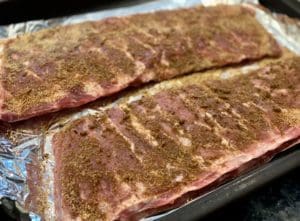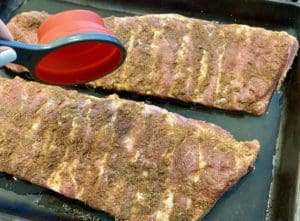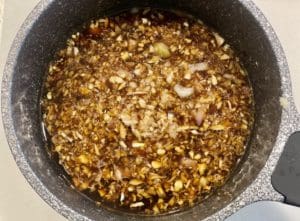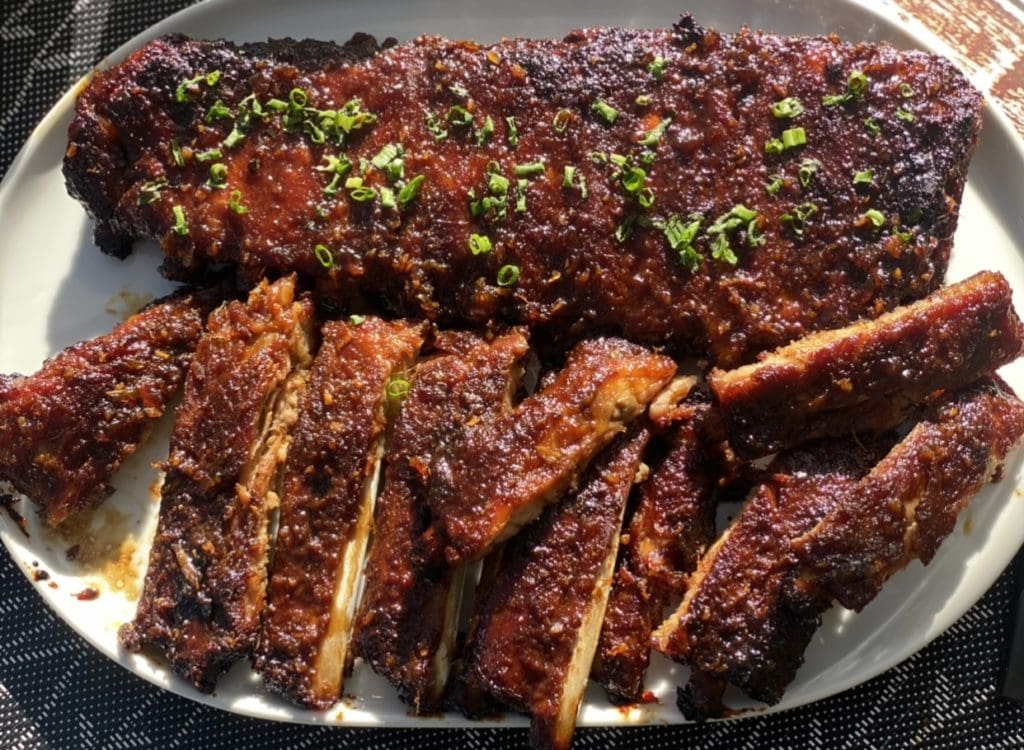
These Korean Style Pork Ribs are slow-baked in the oven until they’re perfectly tender, then they’re coated in a sticky sweet soy sauce
Mouthwatering ribs in Korean sweet BBQ sauce
Ribs are special occasion food for me because I’ll only buy them when something special is on. They’re on the menu when it’s Tomi’s (husband) birthday or Father’s Day, or when we have guests over.
Here’s the thing, I enjoy eating ribs too, but the price of them makes me think twice. We’re paying something like $26 dollars for meat that is 75% bones.… or is my ratio of bones to meat completely out of whack?
Meat-loving Tomi agrees that the price of ribs is expensive, but he loves to remind me that I don’t blink an eye when I buy heavy clams or crayfish. Ok, so one small point for my husband (I say that whilst typing and rolling my eyes)
Speaking of special occasions, Father’s Day is just around the corner. So I’ll be dedicating the next few posts to my husband’s and dad’s favourite dishes.
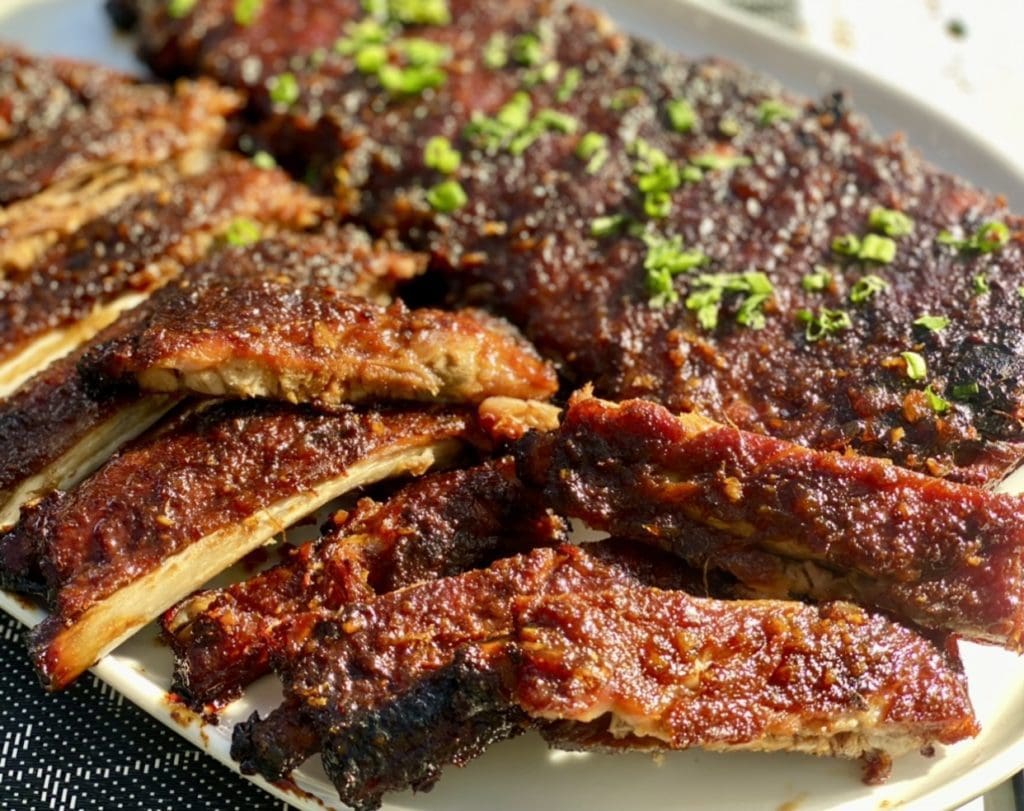
Korean-style ribs served with loads of rice and Korean side dishes (banchan). This is my dad’s favourite way to have pork ribs.
American-style rack of ribs marinaded in a simple dry rub, then slow-baked in the oven until they’re nice and tender. It’s then basted a few times in a Korean-style bbq comprising: soy sauce, garlic, eschalots, ginger, pineapple juice, honey and brown sugar. These ribs are sweet, salty, sticky and oh so good!
What is the purpose of a dry rub?

Don’t skip the dry rub because it elevates the flavour of the ribs and adds depth. The dry rub also creates a delicious crust on the ribs.
A dry rub usually has a mix of dried herbs, spices and salt and pepper.
The dry rub I used for these is a simple mix of garlic powder, cayenne pepper, salt and pepper. Feel free to omit the cayenne pepper to make the ribs non-spicy and swap it with your favourite herb or spice. Dried oregano, parsley, or onion powder are good options.
Are you a meat lover like my husband? Great! You’re going to love these recipes!
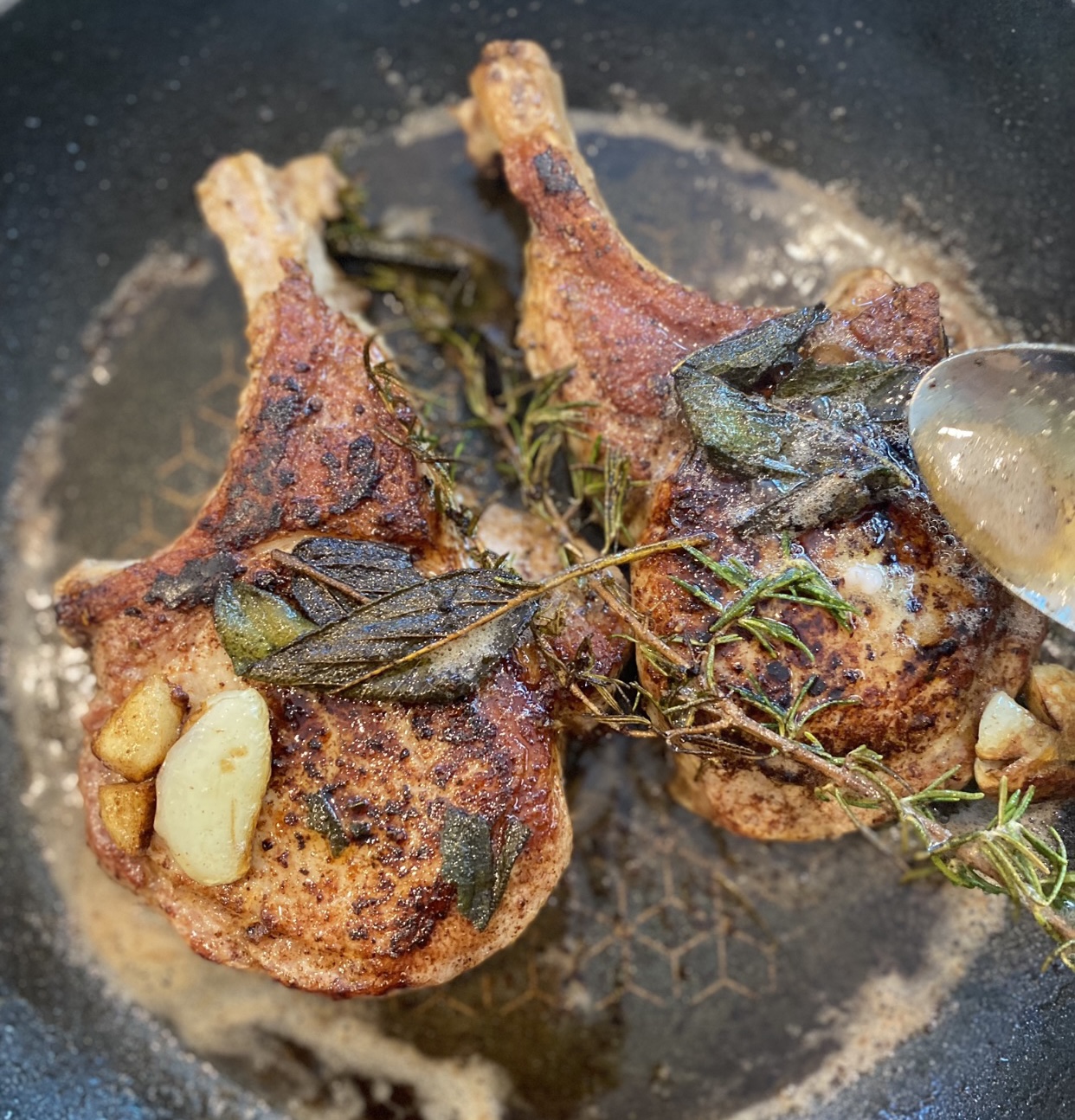
Pork chops & Apples
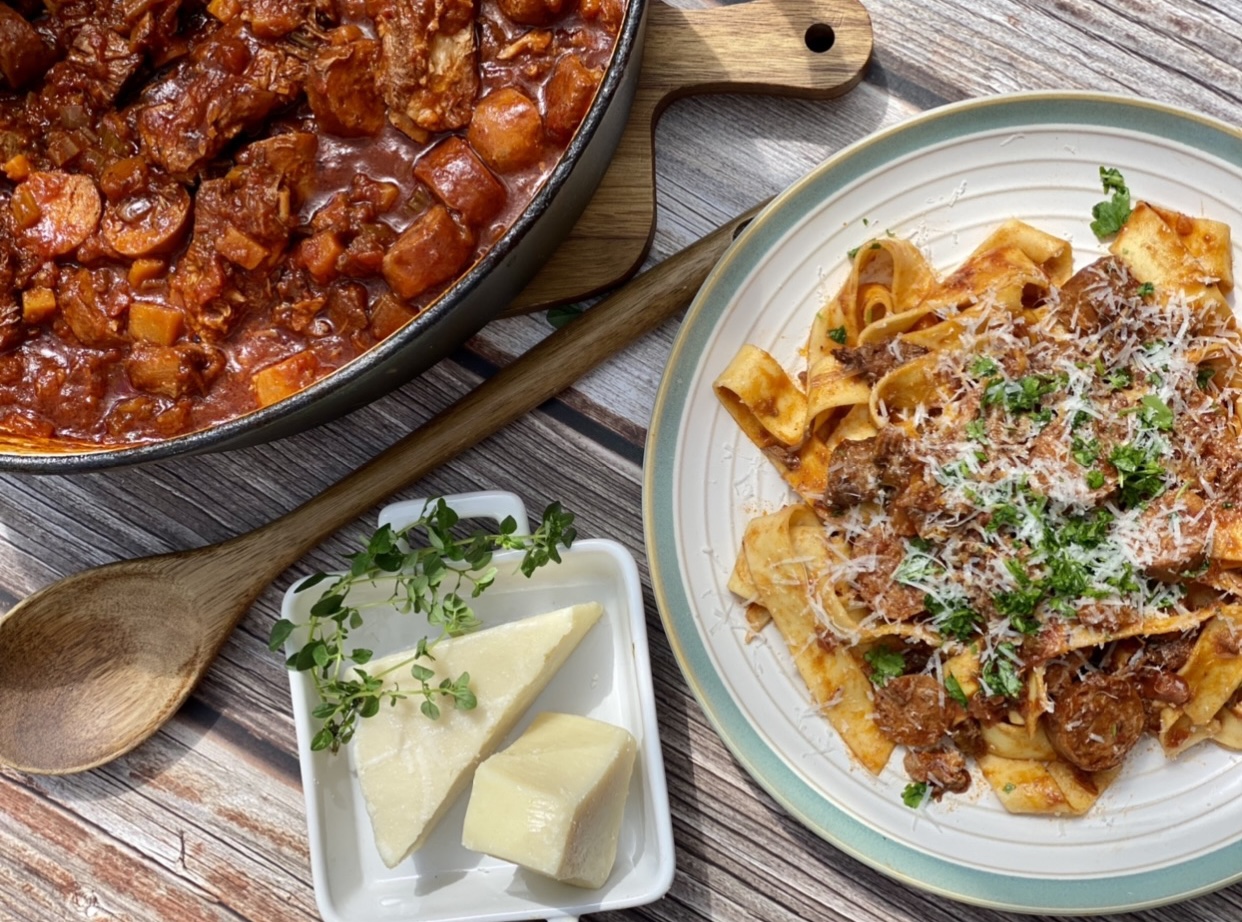
3 Meat Slow cooked ragu

Bacon Sausage Sandwich

Moroccan Beef Kefta
Why American-style ribs?

American-style pork ribs are hugely popular here, and easy to find at local butchers. They’re more expensive than most cuts of pork ribs. If cooked correctly, the ribs promise succulent and tender meat on the bone. It’s supposed to have a near-perfect, meat-to-bone ratio, meaning more meat on each bone.
I cheekily wrote ‘supposed’ because the American-style ribs at my butchers were quite skimpy and bony. After driving around 5 butcher shops, I gave in because all the ribs labelled American ribs looked small and bony. I’ve got the strangest feeling that next week when I’m not looking for ribs I’ll see perfect plump racks of ribs that I was trying to hunt down! I swear this ALWAYS happens to me.
Ingredients for Korean Style Pork Ribs

Pork ribs – I used American-style pork ribs, but you could use any cut of ribs. Try to find ribs that have generous meat on the bone if possible.
Pineapple juice adds a subtle sweetness and tartness to the sauce. I used fresh pineapple juice from the chilled section of the supermarket. You could swap pineapple juice with apple juice in this recipe for slow-baking with the ribs and in the sauce.
Light soy sauce or regular soy sauce but avoid the dark or sweet soy sauce varieties, as these are not interchangeable.
Eschalots – I’ve seen shallots called ‘eschalots’ or ‘French shallots’ here. Shallots look like small brown onions but are skinny and oval-shaped, and when cut open they look like red onions. They’re difficult to peel and are more expensive than other types of onions. Shallots are mild in flavour compared to onions, but you could use brown/yellow onions as a substitute.
Subscribe to 3CatsFoodie’s FREE Newsletter

For the latest recipes and other fun stuff!
How to make Korean Style Pork Ribs
Step-by-step guide with photos

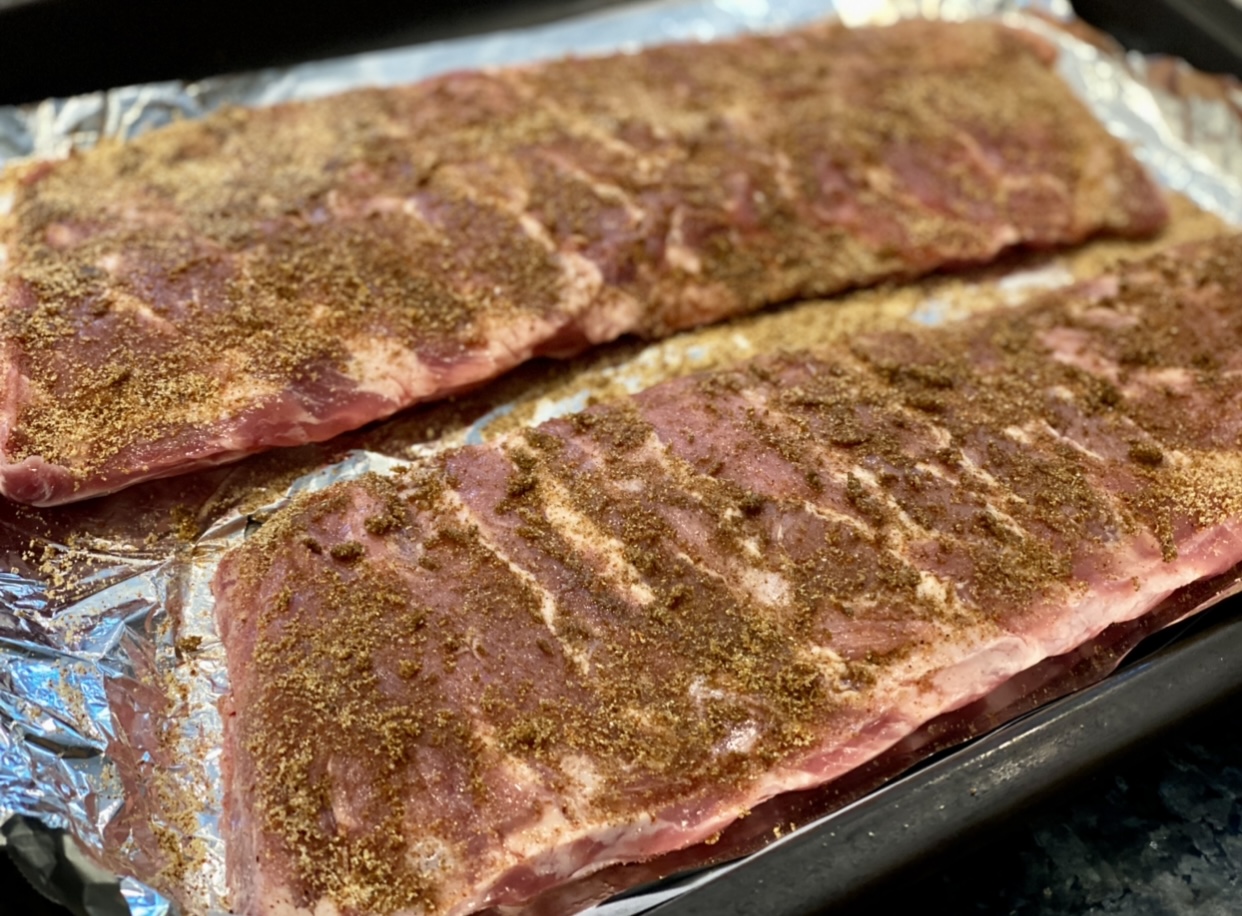
Place all the ingredients for the spice rub into a small bowl and mix well to combine. Sprinkle the spice over the ribs (top and under) then use your fingers to rub the spices in. Leave the ribs to rest at room temperature for 30 minutes uncovered or cover them and place them in the fridge overnight.
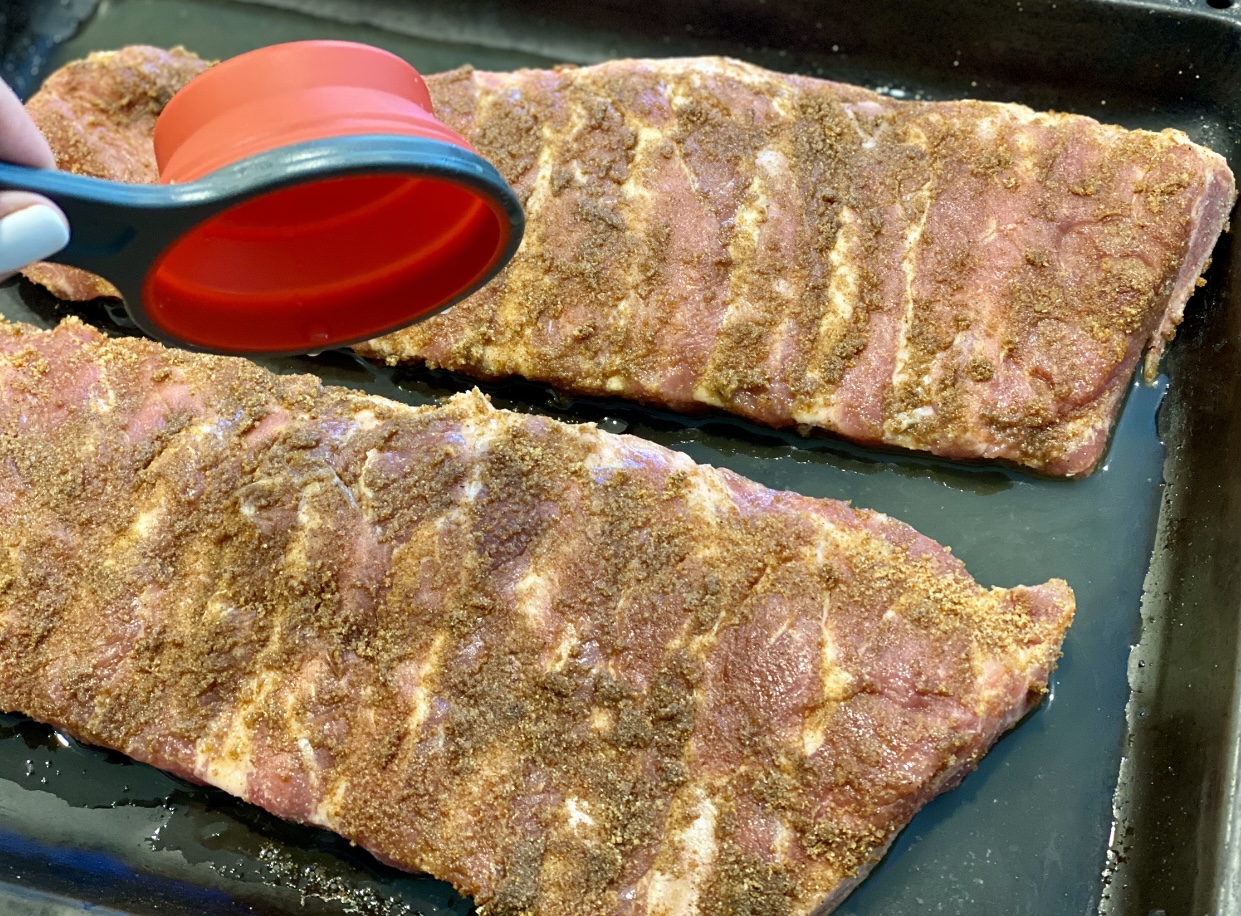
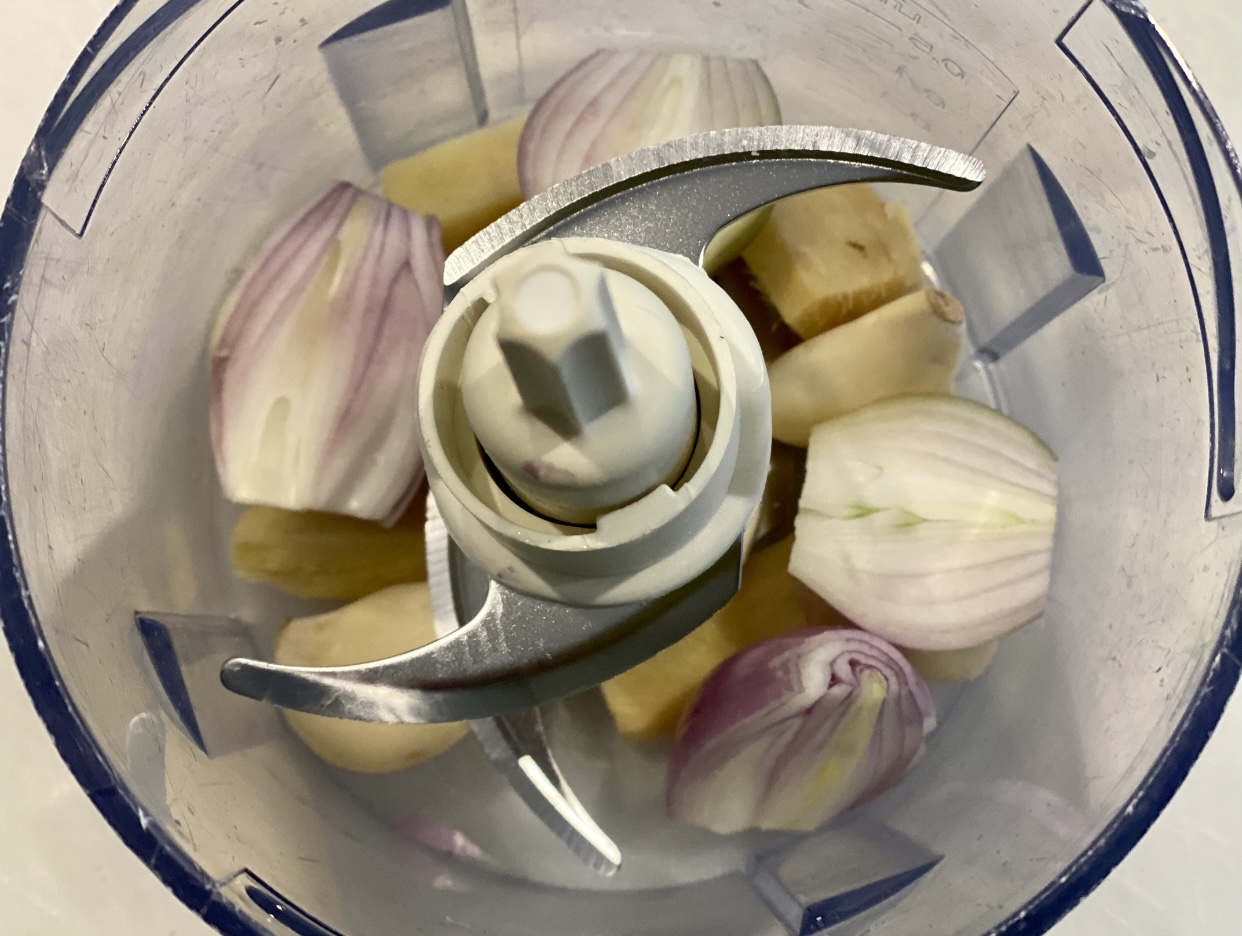
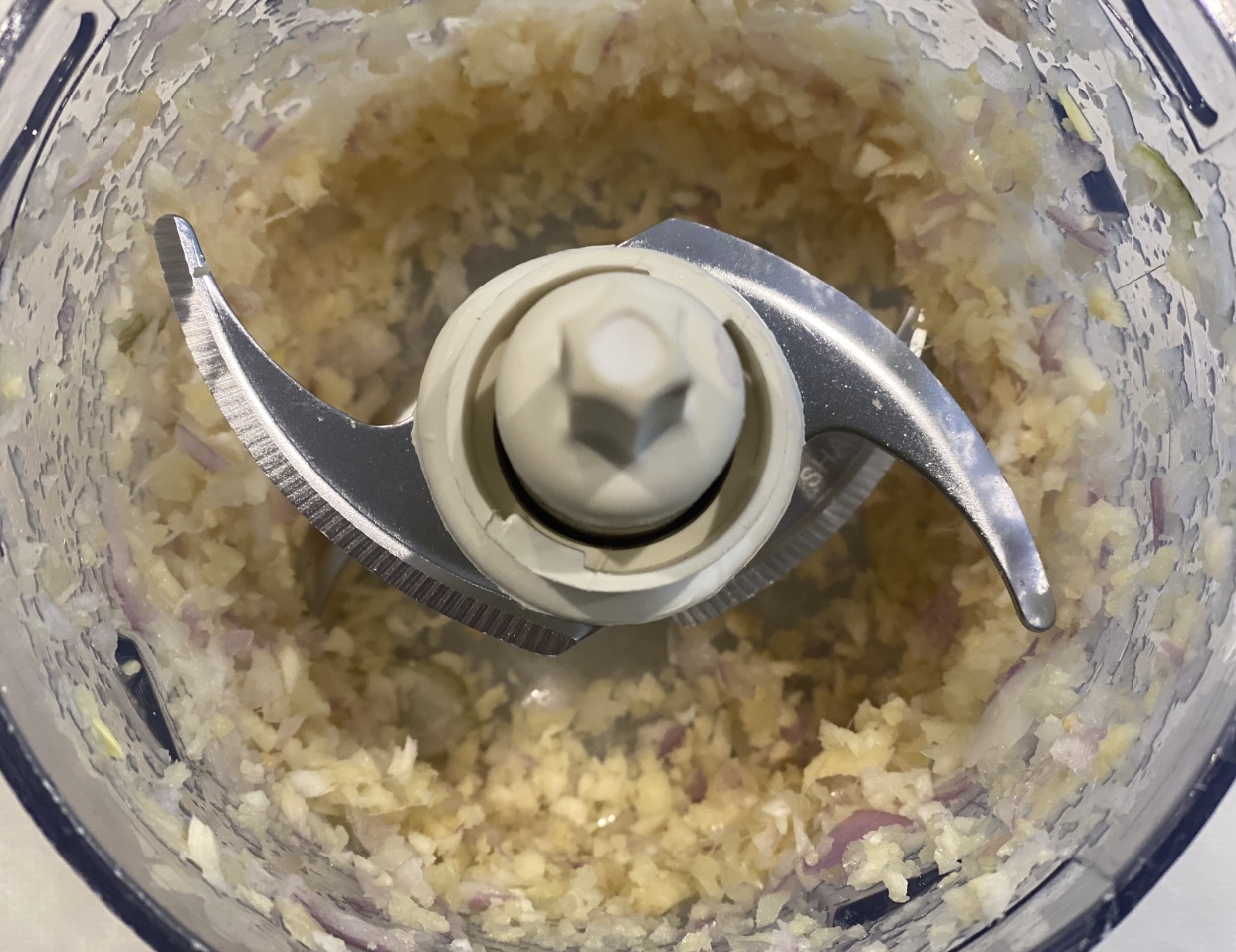

In the last 15 minutes of marinading time, preheat the oven to 160°C (320°F)
Place the ribs on a large baking tray and pour the pineapple juice into the tray. Cover the tray with a few sheets of aluminium foil. Slow-bake the ribs for 1 hour and 30 minutes.
Whilst the ribs are baking, prepare the sauce. Place the garlic, ginger and eschalot in a blender and pulse until finely chopped, then place them into a small saucepan. Add in the remaining ingredients for the sauce and give it a mix. Place the saucepan over medium-high heat and bring it to a boil, then reduce the heat to medium. Simmer the sauce for 15 minutes uncovered, stirring occasionally. Remove saucepan from heat and leave at room temperature.
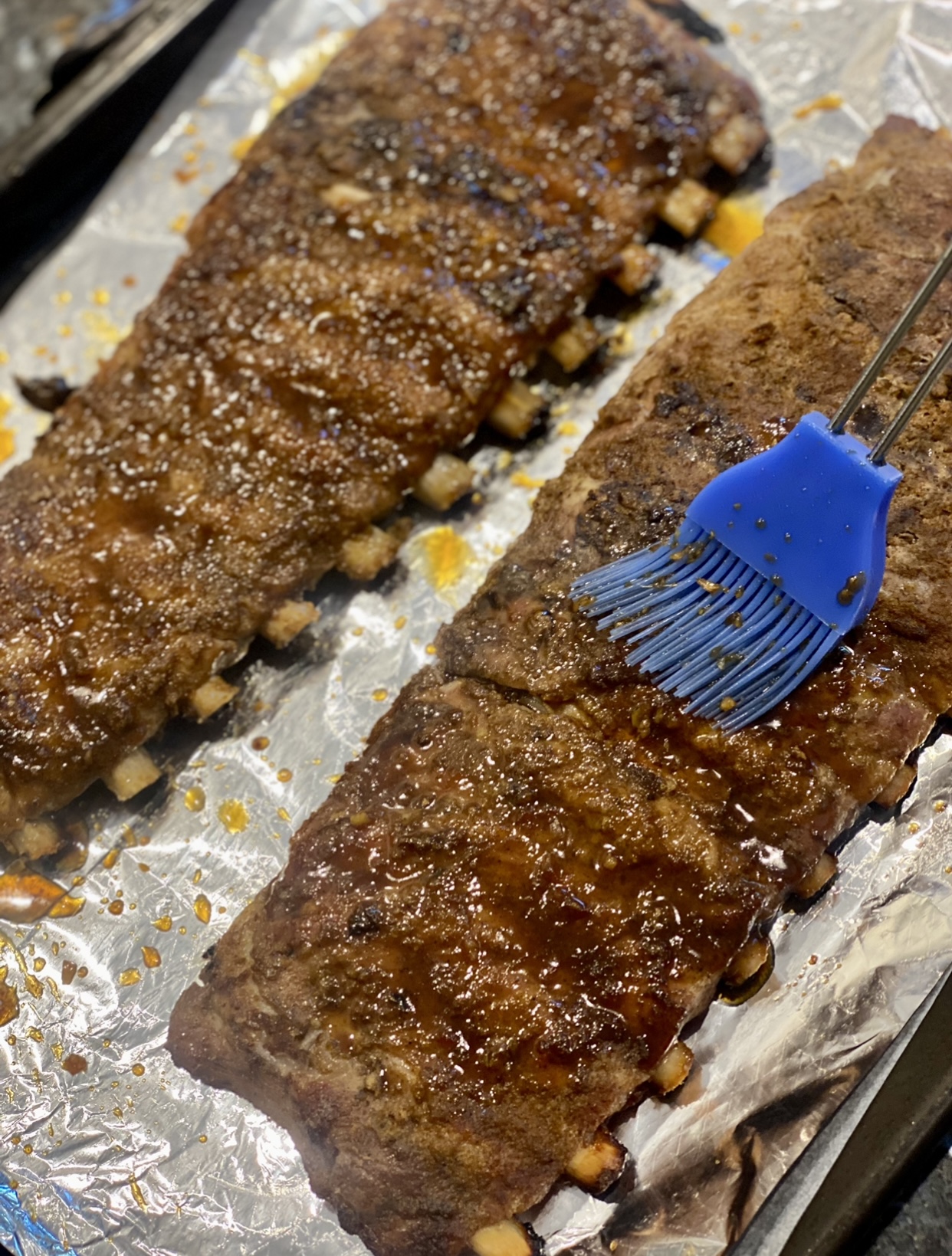
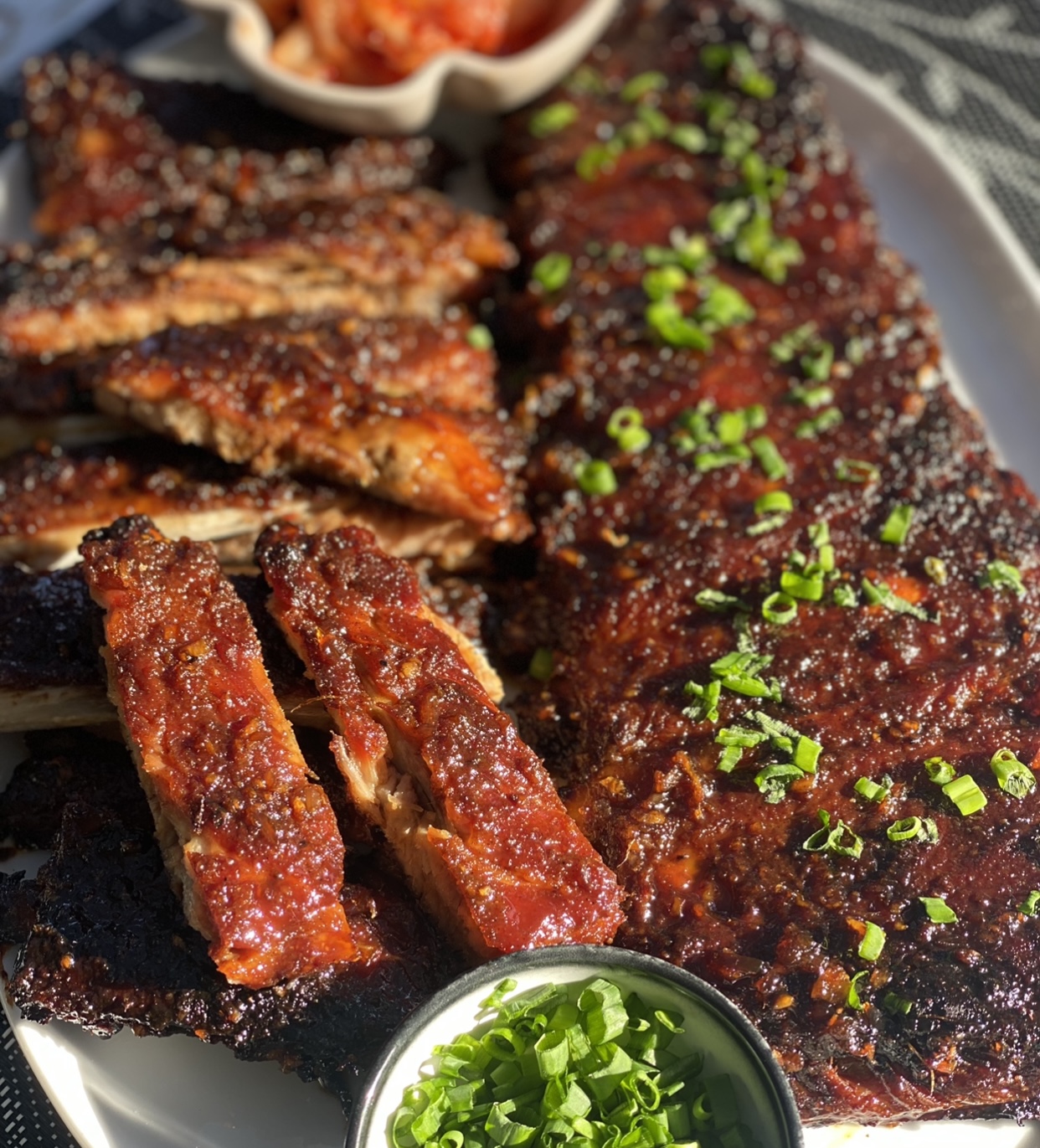
Remove the ribs out of the oven and increase the temperature to 180°C (360°F). Prepare another baking tray. For easy clean-up, line the tray with baking/parchment paper and then with foil over the top. Remove the ribs onto the new tray, with the bony side facing up. Baste the ribs generously with the sauce and bake for 10 minutes. Flip the ribs over and baste again, then place in the oven for another 10 minutes. Repeat this another 2 times (40mins in total). Garnish with spring onions and serve immediately.
Serving suggestions – These Korean Style Pork Ribs go down really well with steaming rice and kimchi or any Korean side dishes (banchan).
Leftovers – Allow the ribs to cool completely at room temperature, then transfer into a sealed container and store in the fridge for up to 3 days.
I’ve used a third-party application to calculate the calories and nutritional information, so please use this as an approximate guide only.
Cooking measurements are in Australian standard spoon and cup measurements. For specific details and conversions, visit our Australian Cooking Measurements page.
I would love your feedback and support if you made this recipe. To do this, please rate this recipe and provide a comment by scrolling down this page or by clicking that green circle on the bottom left. An email address is required (for spam), but it won’t be published. I would also love to see your dish, so don’t forget to tag me on my Instagram account ‘3catsfoodie’
Cheers – Cat T
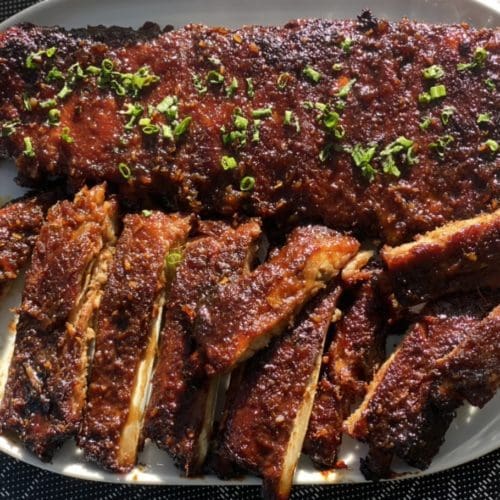
Korean Style Pork Ribs
Ingredients
- 1.5 to 1.8 kg pork ribs (2 racks – American style) (NOTE 1)
- ¾ cup pineapple juice (fresh if possible) (NOTE 2)
Spice rub
- 1½ tbsp garlic powder
- 2 tsp cayenne pepper (or less/omit to taste)
- ½ tsp black pepper
- ½ tsp salt
Korean-style BBQ sauce
- 4 cloves garlic
- 1 inch ginger (approx. 25g/1oz)
- 2 small eschalot (approx. 45g/1.6oz) (NOTE 3)
- ¾ cup light soy sauce (NOTE 4)
- ⅓ cup pineapple juice
- ½ cup honey
- ⅓ cup brown sugar (packed)
- 2 tsp sesame oil
Garnish
- ¼ cup spring onion (sliced thinly)
Instructions
- Place all the ingredients for the spice rub into a small bowl and mix well to combine. Sprinkle the spice over the ribs (top and under) then use your fingers to rub the spices in. Leave the ribs to rest at room temperature for 30 minutes uncovered or cover them and place them in the fridge overnight.

- In the last 15 minutes of resting time, preheat the oven to 160°C (320°F) Place the ribs on a large baking tray and pour the pineapple juice into the tray. Cover the tray with a few sheets of aluminium foil. Slow-bake the ribs for 1 hour and 30 minutes.

- Whilst the ribs are baking, prepare the sauce. Place the garlic, ginger and eschalot in a blender and pulse until finely chopped, then place them into a small saucepan. Add in the remaining ingredients for the sauce and give it a mix. Place the saucepan over medium-high heat and bring it to a boil, then reduce the heat to medium. Simmer the sauce for 15 minutes uncovered, stirring occasionally. Remove saucepan from heat and leave at room temperature.

- Remove the ribs out of the oven and increase the temperature to 180°C (360°F). Prepare another baking tray. For easy clean-up, line the tray with baking/parchment paper and then with foil over the top. Remove the ribs onto the new tray, with the bony side facing up. Baste the ribs generously with the sauce and bake for 10 minutes. Flip the ribs over and baste again, then place in the oven for another 10 minutes. Repeat this another 2 times (40mins in total). Garnish with spring onions and serve immediately.


